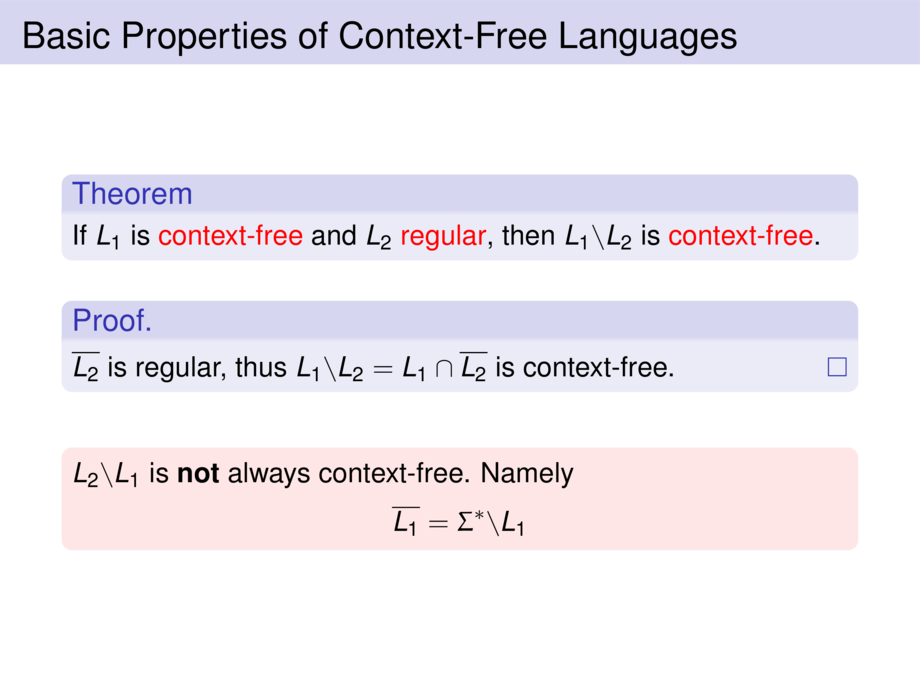



































































































28/46
\begin{frame}{Basic Properties of Context-Free Languages}
\begin{block}{Theorem}
If $L_1$ is \alert{context-free} and $L_2$ \alert{regular}, then $L_1 \backslash L_2$ is \alert{context-free}.
\end{block}
\pause\medskip
\begin{proof}
$\overline{L_2}$ is regular,
thus $L_1 \backslash L_2 = L_1 \cap \overline{L_2}$ is context-free.
\end{proof}
\pause\bigskip
\begin{alertblock}{}
$L_2 \backslash L_1$ is \emph{not} always context-free. Namely
\begin{talign}
\overline{L_1}=\Sigma^*\backslash L_1
\end{talign}
\end{alertblock}
\end{frame}

